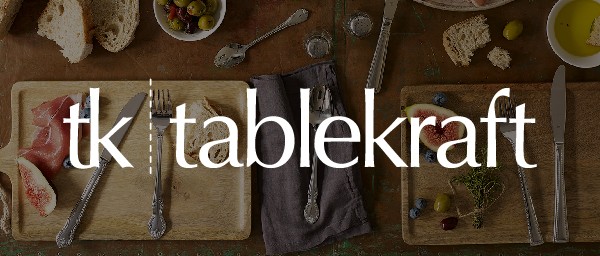Latino Foods
Search for Food or Groceries on Gift Tree NZ — help us create one more Kiwi job!
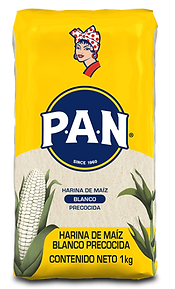
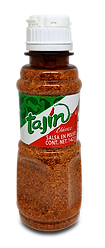
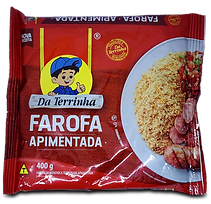
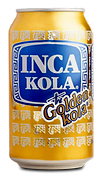
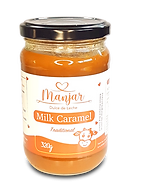
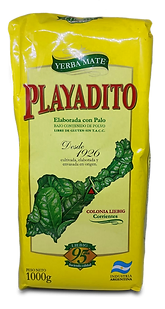

Latin American cuisine, often referred to as Latino food, boasts a rich and diverse culinary tradition that spans across numerous countries, each contributing unique flavors, ingredients, and cooking techniques. From the vibrant streets of Mexico to the coastal regions of Peru, Latin American dishes have gained international recognition for their bold flavors and cultural significance. Mexican food, in particular, has become a cornerstone of Latin American cuisine, offering a wide array of dishes that satisfy palates around the world. Tacos, tamales, ceviche, and empanadas are just a few examples of iconic Latino foods that showcase the depth and complexity of Hispanic culinary traditions.
Mexican food stands at the heart of Latino cuisine, with tacos taking center stage as one of the most beloved street foods worldwide. These handheld delights come in various forms, with fillings ranging from marinated meats like carnitas and carne asada to fresh seafood for fish tacos. Tacos are made with freshly prepared tortillas and accompanied by key Latino ingredients such as cilantro, onions, and lime, adding bursts of freshness and flavor. Another hallmark of Mexican cuisine is the tamale, a dish steeped in history and tradition. Made from corn dough and filled with a variety of meats, cheeses, or vegetables, tamales are wrapped in corn husks and steamed, offering a taste of Mexican culture in every bite.
Empanadas and ceviche further illustrate the diversity of Latin American cuisine, with each region adding its twist to these dishes. Empanadas, found across Latin America, are savory pastries filled with meats, cheese, or vegetables and can be baked or fried depending on the local culinary preferences. Ceviche, a popular seafood dish, is prepared with fresh fish marinated in citrus juices, often accompanied by chili peppers, cilantro, and onions. This refreshing dish is a testament to the fresh ingredients that define Latino cuisine, making it a favorite for those seeking light, flavorful meals.
The Rich Diversity of Latin American Cuisine: Exploring Mexican Tacos, Tamales, Ceviche, Empanadas, and Traditional Hispanic Foods
Latin American cuisine, often referred to as Latino food, holds a significant place in global culinary traditions. With a vast array of flavors, ingredients, and cooking techniques, Latin American dishes have spread far beyond their native regions, influencing global palates. Mexican food, in particular, has gained prominence, becoming a favorite for many who appreciate bold flavors and vibrant dishes. This essay delves into the essentials of Latino foods, highlighting iconic dishes such as tacos, tamales, ceviche, empanadas, and Mexican salsas. We'll explore the key Latino ingredients that define Hispanic foods, showcase traditional Latin dishes, and provide insight into Latin food recipes that capture the essence of Latin American culture.
The Essence of Mexican Food in Latino Cuisine
Mexican food stands as a cornerstone of Latino cuisine, boasting an impressive range of dishes that vary by region and local tradition. One of the most iconic Mexican foods is the taco. Whether filled with succulent carnitas, savory carne asada, or flavorful chicken, tacos represent the heart of Mexican street food. These handheld delights have become a global sensation, with variations that include hard-shell tacos, soft tacos, and the ever-popular fish tacos. Key ingredients for traditional Mexican tacos include freshly made tortillas, marinated meats, and fresh vegetables like onions, cilantro, and lime.
Another quintessential dish in Mexican cuisine is the tamale. Tamales have been a staple of Mexican food for centuries, with origins tracing back to ancient Mesoamerican civilizations. Traditionally made with corn dough (masa) and filled with a variety of ingredients such as pork, chicken, or cheese, tamales are wrapped in corn husks or banana leaves and steamed to perfection. This dish is commonly enjoyed during celebrations and special occasions, making it an integral part of Hispanic food culture.
Ceviche, although more commonly associated with coastal Latin American countries like Peru and Ecuador, has become a popular dish within Mexican cuisine as well. This refreshing seafood dish, made from raw fish marinated in lime or lemon juice, is often accompanied by onions, cilantro, and chili peppers. Ceviche showcases the diversity of Latin American cuisine, with each region adding its unique twist to the preparation and presentation.
Empanadas are another Latin American food staple that has found a place in both Mexican and Hispanic cuisines. These savory pastries are filled with a variety of ingredients, from ground beef to cheese and vegetables, and are either baked or fried. Empanadas are not only popular in Mexico but across Latin American countries, where each culture puts its spin on the recipe, making them one of the most versatile dishes in Latino foods.
The Importance of Latino Ingredients in Hispanic Foods
At the heart of any great Latin American dish lies the quality of Latino ingredients used to create it. Corn, beans, and chili peppers are the holy trinity of Latino food ingredients, forming the foundation of many traditional Latin dishes. Corn, in particular, plays a crucial role in Mexican food, where it is transformed into tortillas, tamales, and even beverages like atole. Beans, especially black beans and pinto beans, are a staple side dish in many Latin food recipes, offering a rich source of protein and flavor. Chili peppers, ranging from mild to extremely spicy, are essential in creating the vibrant salsas and sauces that accompany many Mexican dishes.
Mexican salsas, in particular, are a key component of Hispanic food. These flavorful condiments are made from a variety of chili peppers, tomatoes, onions, and cilantro, with each salsa offering a unique flavor profile. From the tangy and spicy salsa verde to the smoky richness of chipotle salsa, Mexican salsas enhance the taste of everything from tacos to grilled meats.
Latin American cuisine also heavily relies on fresh produce such as avocados, tomatoes, limes, and cilantro. Avocados, particularly in the form of guacamole, have become synonymous with Mexican food. This creamy, nutritious dip is enjoyed with tortilla chips, spread on tacos, or served as a side dish with grilled meats. Tomatoes are the base of many sauces and salsas in Hispanic foods, adding a bright and acidic flavor to dishes. Limes are used not only as a garnish but also as a key ingredient in marinades, dressings, and beverages such as agua fresca.
Traditional Latin Dishes: A Taste of Latin American Culture
Traditional Latin dishes offer a window into the rich cultural history of Latin American countries. Many Latin food recipes have been passed down through generations, with each family adding its personal touch to the dish. Some of the most popular traditional Latin dishes include mole, enchiladas, and pozole, all of which are staples in Mexican food culture.
Mole is a complex sauce made from a variety of ingredients, including chili peppers, chocolate, and spices. While there are many variations of mole, mole poblano is perhaps the most famous. This dish is often served with chicken or turkey, making it a popular choice for festive occasions. The rich, deep flavor of mole exemplifies the intricate balance of flavors that characterize Latin American cuisine.
Enchiladas are another beloved Mexican dish that has made its way into the repertoire of traditional Latin dishes. These tortillas are typically filled with chicken, cheese, or beans, then rolled up and smothered in a rich sauce, usually made from red or green chili peppers. Topped with melted cheese, sour cream, and fresh herbs, enchiladas are a comforting and flavorful example of Mexican food.
Pozole is a traditional Mexican soup made with hominy, meat (usually pork), and a variety of spices. This hearty dish is often garnished with shredded lettuce, radishes, lime, and chili powder, offering a balance of flavors and textures. Pozole is commonly enjoyed during celebrations such as Christmas and Mexican Independence Day, solidifying its place in Hispanic food traditions.
Latin Food Recipes: Cooking Up Authentic Flavors
For those looking to bring the flavors of Latin American cuisine into their own kitchens, there is no shortage of Latin food recipes to choose from. Many traditional Latin dishes can be recreated with relative ease, allowing home cooks to experience the richness of Latino cuisine. A great starting point is learning how to make authentic Mexican tacos. Begin by preparing homemade tortillas, either from masa harina or store-bought corn flour. Once the tortillas are ready, the filling can be anything from marinated steak to grilled vegetables. Tacos are highly customizable, allowing for endless creativity in the kitchen.
Tamales, while more labor-intensive, are a rewarding dish to master. To make tamales, you will need masa dough, which can be purchased pre-made or prepared from scratch. The filling options are endless, with popular choices including shredded pork, chicken, or cheese with roasted peppers. Once the tamales are filled and wrapped in corn husks, they are steamed until the dough is firm and cooked through. While time-consuming, tamales are the perfect dish for sharing with family and friends.
For those craving something lighter, ceviche is an excellent choice. This refreshing dish is easy to prepare, requiring only the freshest seafood, citrus juice, and a few simple ingredients such as onions, cilantro, and chili peppers. The acidity of the lime or lemon juice "cooks" the fish, resulting in a light and flavorful dish that is perfect for summer gatherings.
Empanadas, with their golden, crispy exterior and savory fillings, are another great Latin food recipe to try at home. The dough can be made from scratch or purchased pre-made, while the fillings can range from traditional ground beef to more creative options like spiced vegetables or cheese. Empanadas can be baked or fried, depending on your preference, making them a versatile dish for any occasion.
Mexican Salsas: The Perfect Accompaniment to Latin American Cuisine
No discussion of Latin American cuisine would be complete without mentioning Mexican salsas. These flavorful condiments are the perfect accompaniment to a variety of Latino foods, adding both heat and depth to dishes. Salsa verde, made from tomatillos and green chili peppers, is a tangy and slightly spicy salsa that pairs well with everything from tacos to grilled chicken. For a smoky, rich flavor, try making chipotle salsa, which uses dried and smoked jalapeños to create a deep, complex sauce.
Pico de gallo, a fresh salsa made from diced tomatoes, onions, cilantro, and lime juice, is a staple in Mexican food. This salsa is perfect for adding a burst of freshness to tacos, grilled meats, or simply enjoyed with tortilla chips. The simplicity of pico de gallo highlights the importance of using fresh, high-quality Latino ingredients in Hispanic foods.
For those who enjoy a bit more heat, salsa roja is the way to go. Made from red chili peppers, tomatoes, and garlic, this salsa packs a punch and is commonly used in traditional Latin dishes like enchiladas or huevos rancheros. Salsa roja can be made as mild or spicy as desired, allowing for customization to suit individual taste preferences.
Conclusion: Celebrating Latin American Cuisine and Hispanic Foods
Latin American cuisine offers a rich and diverse array of flavors, ingredients, and dishes that are deeply rooted in tradition and culture. Mexican food, with its iconic tacos, tamales, ceviche, and empanadas, represents just a small portion of the vast world of Latino foods. The use of fresh Latino ingredients, from corn and beans to chili peppers and avocados, forms the backbone of many traditional Latin dishes. Mexican salsas, with their bold flavors and vibrant colors, enhance the taste of any meal, making them an essential part of Hispanic food culture.
As Latin American cuisine continues to gain popularity worldwide, more people are discovering the joys of cooking with authentic Latin food recipes. Whether preparing tacos for a casual family dinner or making tamales for a festive celebration
Introduction: A Taste of Latin America
Latin American cuisine is a rich fusion of flavors, textures, and ingredients that tell a story of centuries-old traditions and cultural diversity. From the spicy heat of Mexico’s salsas to the sweet tropical fruits found in the Caribbean, Latin food is an exploration of unique tastes and vibrant dishes. This blog will guide you through some of the most iconic and beloved dishes from Latin America, highlighting traditional favorites that have been passed down through generations.
Whether you’re a Latino craving the taste of home or someone new to Latin food, get ready to indulge in the aromatic spices, savory stews, and mouth-watering desserts that make Latin cuisine truly special.
1. Mexican Food: A Fiesta of Flavors
Mexican food is arguably the most internationally recognized Latin cuisine, famous for its bold flavors and iconic dishes. From tacos to tamales, every bite packs a punch of spicy, smoky, and savory goodness. Here are a few Mexican food staples that should be on your culinary bucket list:
Tacos
Tacos are the quintessential Mexican dish. Soft corn tortillas filled with a variety of fillings, such as grilled meats, fresh salsas, and coriander, are a quick and satisfying meal enjoyed at street food stands and gourmet restaurants alike. Carnitas (slow-cooked pork), al pastor (spiced pork), and baja fish tacos are just a few popular options.
Enchiladas
Enchiladas are another staple, consisting of corn tortillas stuffed with meats, cheese, or vegetables, then smothered in a rich chili sauce. They're often topped with crema (Mexican sour cream) and cheese, creating a deliciously creamy texture.
Guacamole
No Mexican meal is complete without guacamole, a creamy avocado dip mixed with tomatoes, onions, cilantro, and a squeeze of lime. It’s perfect for dipping tortilla chips or topping tacos.
2. Argentinian Food: The Heart of Latin Grilling
Argentina is famous for its asados (barbecues), which feature succulent cuts of beef, pork, and chicken, cooked over wood or charcoal. The Argentinian parrilla (grill) is a must-try experience when it comes to savoring the country’s culinary delights.
Empanadas
Empanadas are savory pastries filled with various ingredients, such as beef, chicken, or cheese. These little pockets of joy are a popular snack or appetizer, often served with a side of chimichurri, a tangy parsley sauce made with vinegar, garlic, and oil.
Milanesa
A classic comfort food, milanesa consists of breaded and fried beef or chicken cutlets, often served with mashed potatoes or a simple salad. It’s similar to the Italian parmigiana, but without the cheese.
Choripán
One of the most beloved street foods in Argentina is choripán — a sausage sandwich with chorizo, served on crusty bread and topped with chimichurri sauce. It’s a quick and flavorful snack that’s perfect for enjoying in the park or at a gathering.
3. Peruvian Food: A Fusion of Flavors and Traditions
Peruvian food has gained international acclaim for its diverse ingredients and distinctive flavors. Influenced by the Andean, Amazonian, and coastal regions, Peruvian cuisine is a beautiful blend of indigenous and colonial influences.
Ceviche
Ceviche is one of the most famous dishes in Peru, made from fresh fish or seafood marinated in lime juice, then mixed with onions, cilantro, chili peppers, and served with sweet potatoes or corn. It’s a refreshing and tangy dish that embodies the coastal flavors of Peru.
Lomo Saltado
Lomo Saltado is a fusion dish combining Chinese stir-fry techniques with traditional Peruvian ingredients. It consists of beef strips, tomatoes, onions, and fries, all sautéed together in soy sauce, offering a savory, slightly tangy flavor.
Aji de Gallina
Aji de Gallina is a rich and creamy chicken stew made with yellow chili peppers, bread, cheese, and nuts, creating a smooth and savory sauce. It’s typically served with rice and boiled potatoes.
4. Colombian Food: A Flavorful Journey
Colombian cuisine is known for its diverse and hearty dishes that range from soup-based meals to meat-centric plates, often served with a side of arepas (cornmeal cakes). Let’s dive into some of the favorite dishes from Colombia:
Arepas
Arepas are a corn-based dish, similar to a thick flatbread, which can be filled with anything from cheese and meats to avocado and salsa. Whether grilled or fried, these crispy delights are a staple of Colombian cuisine.
Bandeja Paisa
The Bandeja Paisa is a traditional Colombian dish, often considered the country’s national meal. It features a generous serving of rice, beans, fried pork belly, ground beef, avocado, fried egg, and a small portion of arepa, making it a feast of Colombian flavors.
Sancocho
A comforting stew, sancocho is made with meat (chicken, beef, or pork), yuca, corn, potatoes, and cilantro. This dish is a hearty and delicious way to experience the flavors of Colombia.
5. Dominican Food: Flavors of the Caribbean
Dominican food offers a combination of Caribbean spices, African influences, and Spanish ingredients, creating a vibrant and flavorful cuisine that’s both rich and comforting.
Mangu
Mangu is a traditional Dominican breakfast dish made from mashed plantains, often served with fried eggs, salami, and cheese. It's a hearty and satisfying meal to start the day.
Mofongo
Mofongo is made from fried plantains, mashed with garlic, olive oil, and pork cracklings. It’s served as a side dish or with meats, seafood, or stews, creating a rich and savory flavor profile.
La Bandera Dominicana
The Dominican Flag (La Bandera Dominicana) is the national dish, typically consisting of rice, beans, and meat (usually chicken or beef). This dish is served with fried plantains and avocado and is a symbol of the country’s culinary tradition.
Conclusion: A World of Latin Flavors
Latin American cuisine is as diverse as its people, offering an endless variety of bold, colorful, and delicious dishes to try. From the spicy salsas of Mexico to the rich stews of Colombia and the vibrant ceviches of Peru, every Latin American country brings its own unique contribution to the world of food. These dishes don’t just fill your stomach — they tell the stories of centuries-old traditions, regional ingredients, and cultural exchange.
Explore the wide array of Latin flavors and let your taste buds embark on a journey across countries. Whether you’re cooking at home or dining out, Latin food brings people together, sparking conversation, and creating lasting memories with every meal.
Whether you’re a Latino craving the taste of home or someone new to Latin food, get ready to indulge in the aromatic
spices,
savory stews, and mouth-watering desserts that make Latin cuisine truly special.
For an authentic experience of Latin food in New Zealand, check out Latino Foods, where you can discover and order a wide range of Latin products to recreate these dishes at home.



.jpg)









.jpg)





.jpeg)





.jpeg)



.jpeg)








.jpeg)



.jpeg)

.jpeg)

.jpeg)

.jpeg)




.jpeg)
.jpg)

.jpeg)






.jpeg)
.jpeg)




.jpeg)

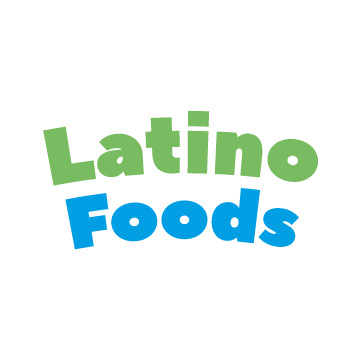



.jpeg)


.jpeg)

.jpeg)

.jpeg)

.jpeg)







.jpeg)
.jpeg)
.jpeg)





.jpeg)



.jpeg)






.jpg)
.jpeg)









.jpg)


ulva-Logo.jpg)




.jpeg)



.png)





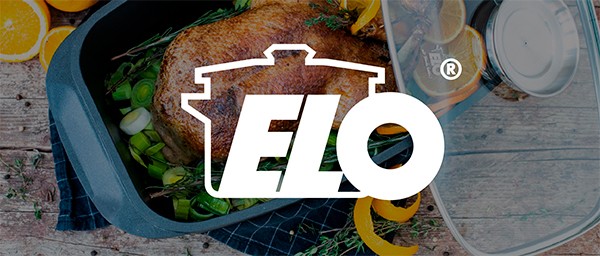









.png)















